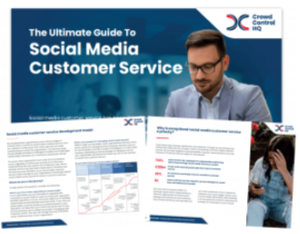With the summer holidays over, and three quarters of UK adults now double jabbed, September is seeing a mass return of workers to the office. The daily commute is back, bringing a sharp rise in passenger numbers for transport operators.
With increased social media traffic – largely consisting of complaints and queries – smart providers are looking to social media to deliver the best customer service experience for their customers.
Harnessing social media to keep customer service on track
With transport customer service teams often relying on scripted responses to familiar comments and questions, forward-thinking operators will be looking to stand out by getting creative on social media.
But first, they need to make sure the way they’re using social media is as efficient as possible.
Using social media management software is a proven way of helping providers streamline their customer service.
With the right software in place, operators can dramatically reduce response times and cut workload by preventing duplication of effort. When staff can see which queries are being handled by which colleague, in real time, it speeds up the entire process.
And with well-managed social media accounts, operators can more easily capitalise on specialist expertise in different teams, too – directing enquiries to dedicated departments to provide a better customer experience and at the same time while operatinge efficiently.
Then – as this efficiency grows – there are opportunities to invest in advanced training for customer service staff, bringing their brand personality into their responses.
The human touch is essential for building good relationships with passengers. And if an operator can turn a complaint into a positive experience – or even better, a post that goes viral for all the right reasons – good customer service also has the power to influence an operator’s reputation.
Communications every day, and in a disaster
Transport operators are, ultimately, becoming more sophisticated in the way they manage the crossover between different departments on social media.
The Marketing department might be responsible for Facebook and Customer Services for Facebook Messenger. But from the customer’s viewpoint, they’re simply talking to one brand.
Social media management software has a crucial role to play in making this a seamless exercise.
Let’s say, for example, flooding causes timetable disruption, or a major incident such as derailment occurs – the ability to streamline responses cohesively between Comms, Customer Services and Crisis Management is essential for keeping passengers informed and happy.
Bringing humanity and understanding to customer service responses can make a huge difference to public perception.
Optimising content management
Finally, when sensitive issues occur, it’s vital to have a clear audit trail of the team members who’ve handled each part of a customer conversation.
With exactly this situation in mind, CrowdControlHQ, part of the BECG Group, has developed a new Content Management feature, which not only identifies responses that could cause reputational damage and routes them for approval but also ensures that the highest priority items are elevated to the top of the list. This flags up ‘trigger phrases’ so that managers are automatically required to give approval before responses go live – ensuring transport operators take the best possible care of their passengers and reputation doesn’t suffer.
In summary…
For transport operators looking to gain ground after a difficult 18 months, engagement with passengers through social media needs to be of a high quality. Operators can gain a lot of goodwill and positive engagement by using a social media platform that keeps their customer service running like clockwork.
Consumers are turning to social before any other channel to get their questions answered, so it’s important for you and your organisation to be prepared. Find out more about best practices for social media customer services with CrowdControlHQ’s handy guide below.





